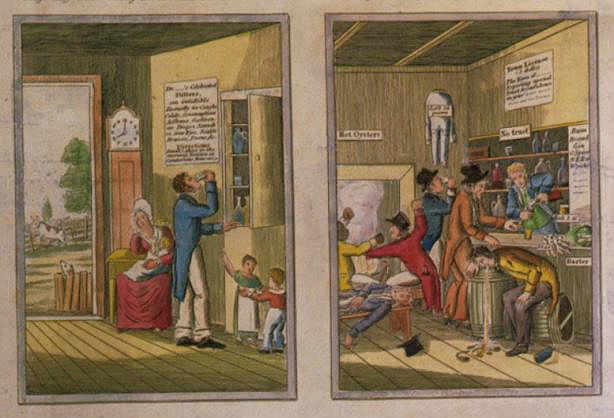…that “haunting” a tavern was once a crime in Connecticut.
During the colonial era and into the 19th century, the Connecticut legislature designed strict laws around the amount of time residents spent in taverns. Authorities instructed constables to enter taverns frequently (by force if necessary) in order to make sure residents spent no more than one continuous hour engaged in idleness or the consumption of strong drink (considered two of the great evil and destructive behaviors of the time). The law allowed exceptions, however, for travelers or those conducting business in the tavern.
Those caught spending too much time in taverns became, under the law, “tavern haunters,” and authorities wrote down their names and posted them outside every tavern in that person’s hometown. The law forbid both tavern haunters from entering taverns and tavern keepers from serving them until such time as the town selectmen, grand jurymen, or other officials saw fit to end an individual’s prohibition period.
In 1784, a tavern keeper caught serving a haunter faced a fine of three pounds, and repeated violations might lead the tavern keeper to lose his license. By way of comparison, a haunter caught patronizing a tavern faced a fine of twenty shillings or two hours confined in stocks. By 1808, with the emergence of American currency, tavern keepers received a fine of ten dollars for their offense and haunters a penalty of $3.34.
Though on the books for a significant portion of Connecticut’s early history, authorities enforced the laws surrounding tavern visitation loosely and inconsistently. In the end, the laws proved largely ineffective at keeping Connecticut residents from frequenting their favorite haunts.









